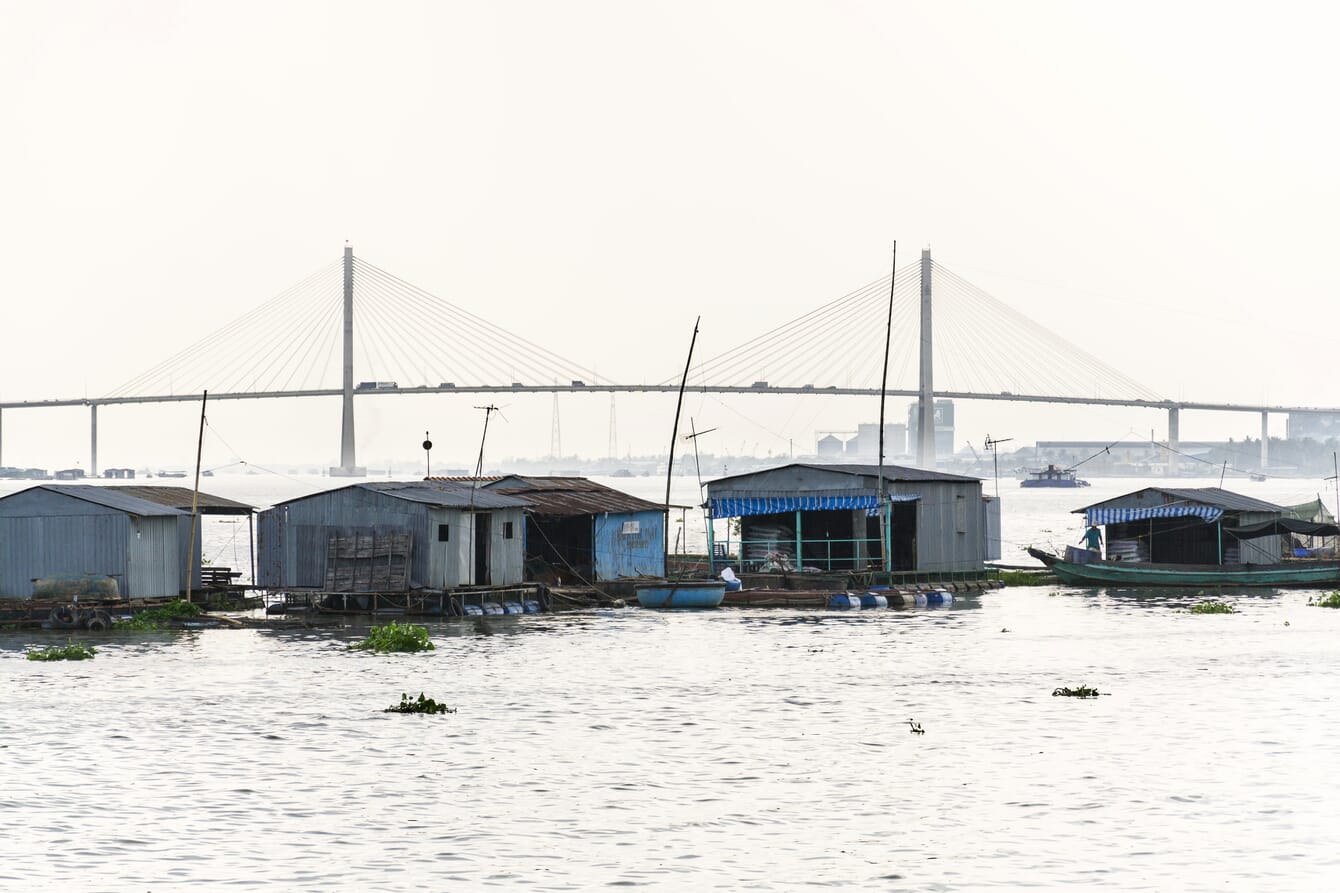
The Delta is home to the majority of Vietnam’s aquaculture sector, particularly its pangasius and shrimp producers, and recorded its worst ever salt intrusion in the 2019/2020 dry season, leading to a six-month shortage in freshwater.
Dr Xiaoyan Wei from the National Oceanography Centre (NOC), who is the lead author of a new paper on the subject, explains: “Estuarine salt intrusion is a real problem across the world. As saltwater is set to intrude further into estuaries with rising sea levels and more extreme weather events, precious freshwater from the upper part of these estuaries will be lost, causing further water restrictions, crop abandonment and biodiversity loss. The ongoing water shortage in many countries due to record drought is a wake-up call for people to take urgent actions to protect freshwater resources.”
One method of salt intrusion mitigation is the construction of physical barriers, such as weirs and sluice gates. However, whilst these can help to prevent the upstream influx of salt water, they come at a huge cost and can have impacts of their own - such as reduced estuary length and adverse effects on fish migration.
The new study used a simplified computer model to understand how the length of an estuary affects salt intrusion in estuaries, where the salinity difference of the water between the surface and the bottom is small. They found tides play a very important role in bringing salt into those estuaries, even though salt intrusion in short estuaries is also strongly affected by other processes such as small-scale circular movement of water and the cross-estuary variations of the current and salinity averaged over one tidal cycle. As tidal strength strongly depends on estuary length in relatively short estuaries, reducing the length only slightly reduces salt intrusion in long estuaries but substantially reduces salt intrusion in short estuaries. They also found salt intrusion in shorter estuaries responds less to changes in tides from the sea and river flow from the upstream river due to the influence of other processes.
Their study highlights the importance of considering the impact of estuary length to effectively mitigate salt intrusion into estuaries, which is necessitated to meet growing human demands for freshwater and maintain the healthy sustainable functioning of estuarine ecosystems.
Commenting on the study’s findings, Dr Xiaoyan Wei said: “This research shows how the effectiveness of barriers for protecting freshwater sources depends on the physical location of the barrier along the estuary. It also shows why estuaries of different lengths might experience contrasting trends of salt intrusion under the same natural and anthropogenic changes.”
The paper, titled Salt Intrusion as a Function of Estuary Length in Periodically Weakly Stratified Estuaries, has been published in Geophysical Research Letters and is now available to read.




